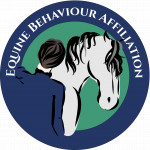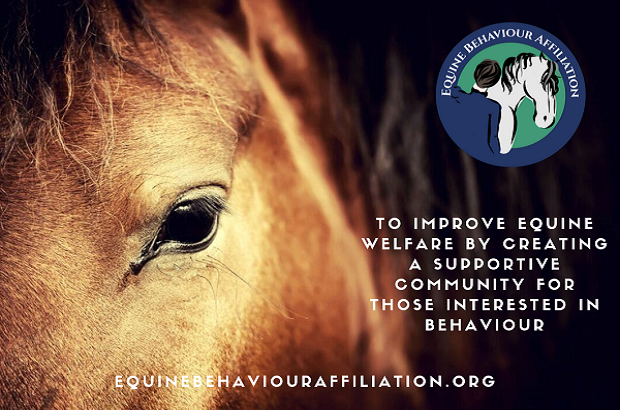Posted: 9th July 2020 | Back to news feed

Ahead of our webinar ‘Three horses that spooked and ran for home – a case study’ on 20th July, Sharon Smith from the Equine Behaviour Affiliation examines the parallels between humans and horse psychology that lead to very individual responses.

There have been posts on social media comparing our recent state of lockdown and the traditional way horses are kept in domestication: separated from family, confined to individual stabling, limited individual turnout and structured daily exercise. A state of permanent lockdown, if you like. Can we REALLY make these assumptions? Surely horses and humans have very different needs, and evolved along very different pathways?
Evolution and ethology is a good place to start:
- Both species spend early life in familial units and learn from them. We may well say ‘It takes a village to raise a child’, but ethology studies determined it takes a band and the stallion to raise a well-adjusted foal.
- Communication with each other, and getting along with each other, facilitates survival. Humans do this verbally for the most part. Horses have much better hearing and sense of smell but have also become master body language observers. Facial expressions in horses are even more subtle than humans. Horses can of course recognise individual horses, as much as we can tell each other apart by sight.
- Horses are problem solvers too. They have to balance risk of predation with having to spend 16 hours a day with their heads on the ground.
How about neuroanatomy? When it comes to learning and habit formation, the structures in horse’s brains are amazingly similar to humans. More so even than apes. In fact, the anatomy of the horse’s brain seems to reflect a lot of what we have observed. They can develop emotional control, although limited. They have the same structures as we do for memory formation. Stress has been shown to damage the brain in horses the same as in humans, and cause stereotypy. Some neurological diseases have an equine equivalent. But, horses are MORE fearful. They cannot plan too far ahead, which explains the failure of researchers to prove horses have a dominance hierarchy like humans and some apes.
The research into equine psychology could be considered to be in its infancy. To date the focus has been mostly on physical health and behaviour; wondering how to get horses to do stuff we want, willingly. This has led to the application of operant learning and classical conditioning to manipulate behaviour. It works as well for horses as other animals, including us. More recently, studies have identified horses respond to social cues and understand the notion of controlling their environment and self-determination. Movements and postures resembling human states of depression and learned helplessness – when life becomes inescapably bad – are still at case-study and pilot-study scale. But a modified approach from human trauma therapy has been very successful in some ‘hard to reach’ behaviour cases, but equally makes common sense.
When a world-leading equine behaviourist, famous equine ethologist, practicing clinical psychologist (human) and an equine masters graduate with an interest in neuroanatomy came together, we realised how very similar horses are to humans – but also, critically, where to draw the line.
So, does the EBA think the human lockdown experience be used to draw parallels with domesticated horses? We think yes, while acknowledging the way we rear keep horses from birth in keep them in domestication means that not every horse can transition to mixed herd living. It doesn’t mean we stop trying. Just that we consider individual needs and use a biopsychosocial approach to help change emotions for the better. The outcome is reduced stress (and less disease and injury) and a safer, nicer, horse to be around.
The Equestrian Index newsfeed is compiled from articles submitted by advertising members and expresses the opinions of those members. Watsons Directories Ltd shall not be held liable for any inaccuracies or mis-statements therein.